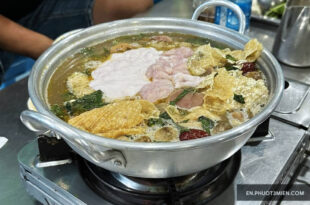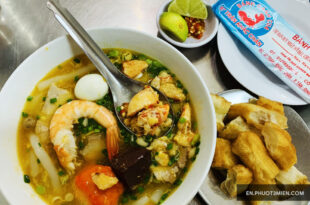Before I embarked on this episode, I was convinced that the difference between goi cuon and goi cuon (Vietnamese Spring Rolls), both of which refer to fresh spring rolls, were mainly a difference in dialect. I was told previously goi cuon was more commonly used in the North, while goi cuon was the terminology of Southern Vietnam. Oh No, was all of that wrong. And with the help of Phuot3mien.com, I finally cleared up the confusion between the two dishes.
What Are Vietnamese Spring Rolls (Goi Cuon)?
Goi Cuon is a fresh spring roll made with grilled meats, as opposed to goi cuon, which is typically flavored with the combo of boiled shrimp and pork. The word cuon alludes to a “roll” and the word goi is the Vietnamese word for salad. The “salad roll” is quite light and more of an appetizer.
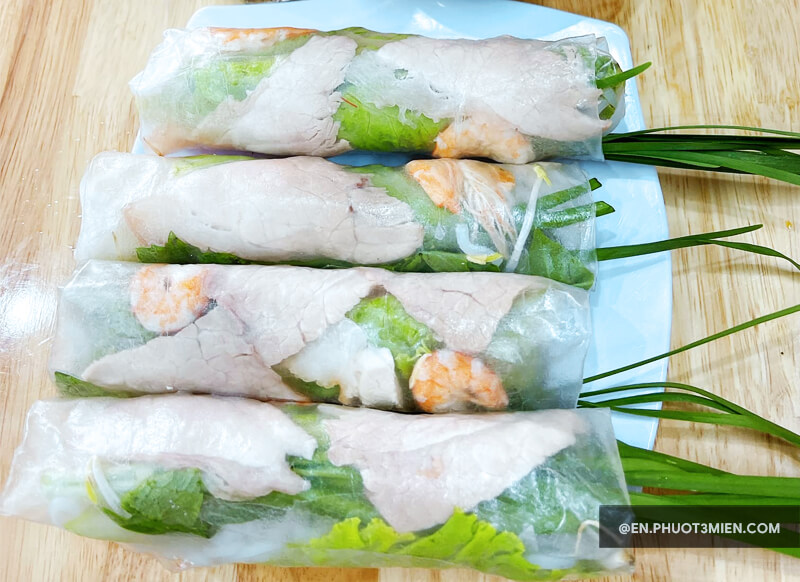
Goi cuon on the other hand, is made with grilled ingredients. The goi cuon we were introduced to was one filled with rice vermicelli, a hunk of pork sausage known as cha lua, mint leaves, shredded lettuce, shrimp crackers, and a hard-boiled egg wrapped in moistened rice paper, known as banh trang.
Different Stories of Vietnamese Spring Rolls
Another difference to note is that goi cuon is THE quintessential Vietnamese appetizer, ubiquitous to all regions of Vietnam whereas goi cuon is a specialty of the Central Highlands. It can be found almost everywhere in the major cities of Buon Me Thuot and Pleiku, the capital of the Gia Lai province.
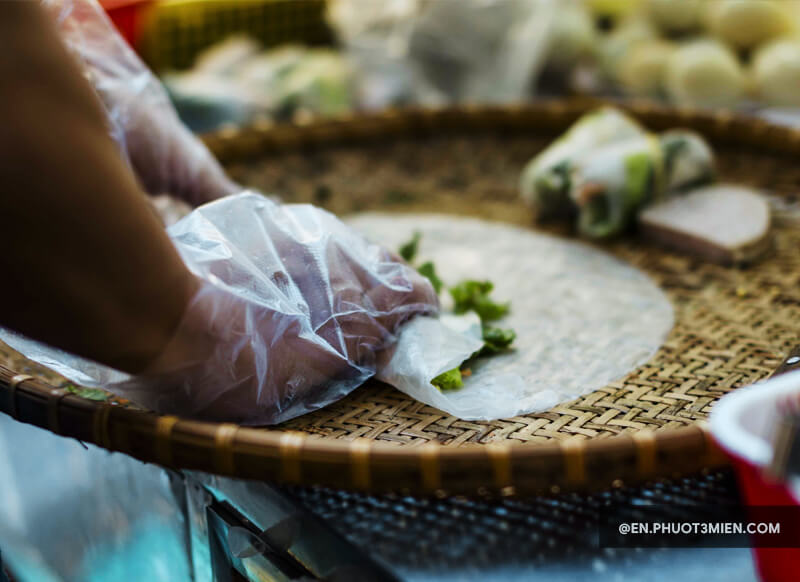
Goi cuon may be the one thing that is truly Vietnamese, and many Vietnamese across the country consider it an imperative part of a complete Vietnamese-style family dinner, but goi cuon is a more specifically sought out treat. Even though a fresh spring roll may not seem like much, these goi cuon are quite heavy and eating a whole roll might be enough to keep you satiated for the evening.
The Best Vietnamese Spring Rolls in Saigon
Goi cuon this side of the highlands is best appreciated in District 7 according to Tran. It was an unexpected suggestion because District 7 has a reputation in town for being one of the more gentrified districts of Ho Chi Minh City. What once was a swamp has now become the ideal for city planning in Saigon. The swamp was drained and now District 7 is home to a large population of foreigners, a majority of whom are Korean.
Because of its predominantly foreign community, a fancy spread of foreign-run food and beverage companies have cropped up in the area. But Tran showed us that some neighborhoods of District 7 still remain unscathed by the effects of gentrification, and thankfully so.
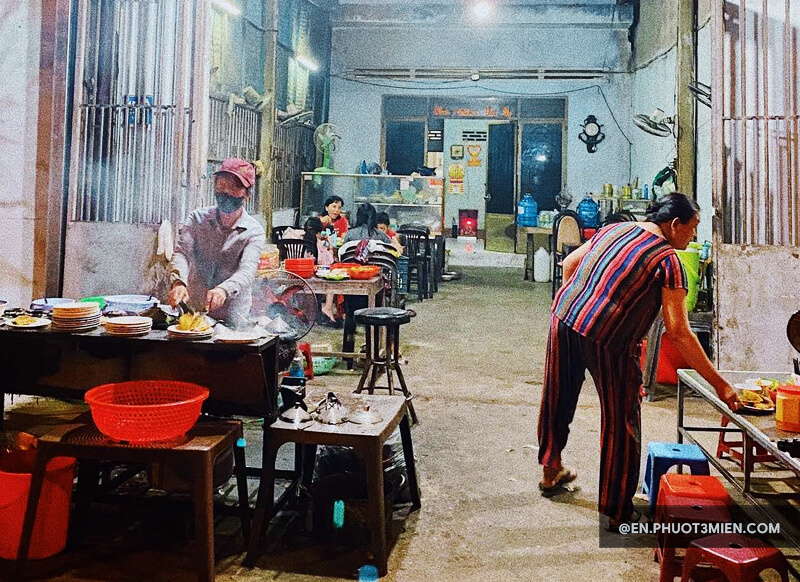
A year and a half ago, when she worked at the nearby Vivocity Mall, she saw a mob of motorcycles crowding around the block and curiosity got the best of her. But in actuality, when hunting down good street food, the best rule of thumb is to go where everyone else is. Following this street food commandment, she discovered Phan Rang Quan, whose owners migrated from the central highlands where they brought their recipes of goi cuon, banh xeo (savory Vietnamese crepes) and banh can (rice flour cakes).
The peak hours of operation are 6 to 7 PM so if you’re coming with a large crew, come earlier. Takeaway is an option but the spring rolls tend to get cold fast and when eating goi cuon, if you leave the rice paper skin out for too long, it immediately dries up and becomes too tough to chew. So, we advise you to dine in. 15,000 VND buys you one large roll, which can suffice for two. Because each roll is sliced down the middle, the normal patrons are families and couples, who delight in this made-for-sharing dish.
How to Eat Vietnamese Spring Rolls
The goi cuon at Phan Rang Quan is special because of a set of condiments that are served with the rolls. The trio of house sauces includes the quintessential fish sauce, known as nuoc cham; a fermented anchovy sauce, mam nem; and a creamy peanut butter sauce. You can dip your rolls in each condiment separately or follow suit and mix the nuoc cham with the peanut butter sauce. The sauce fusion is a layered symphony of flavors, with the velvety richness of the peanut butter gravy giving body to the silky nuoc cham. It’s a tug-of-war in your mouth between the saltiness of the fish sauce and the sweetness of the peanut blend.
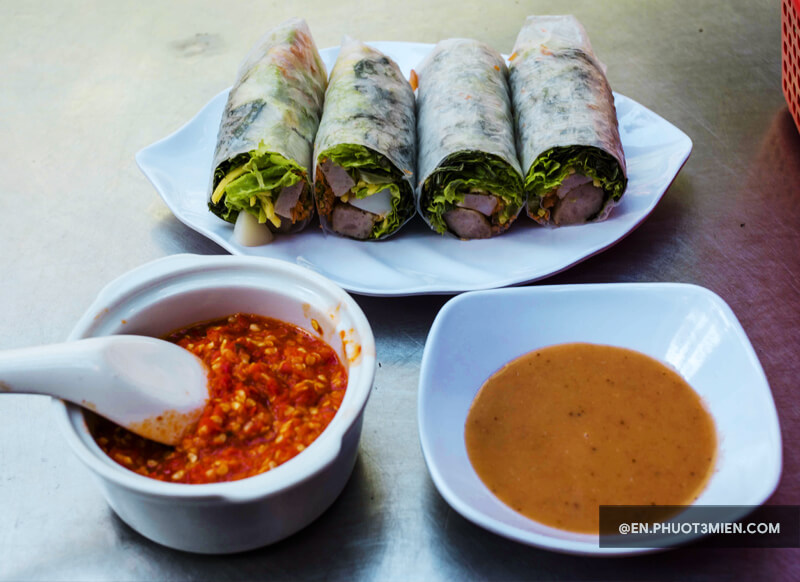
Another thing to note is that the sauce bowls, which usually come in the form of tiny saucers everywhere else, are sizably much bigger at this establishment. I mean, they’re almost the size of soup bowls! Because the sauces are kept in plastic water pitchers, you can have as much as you want. Pour generously and don’t be afraid to ask for more! After you’ve mixed your sauces, dunk your roll into the pool of condiments.
We Recommend…
For folks traveling in groups, eating goi cuon is a social experience unlike any other and also makes for a light dinner. A few rolls of goi cuon will pack a hearty punch but still won’t feel too heavy enough to make you drowsy. This is also the place for cultural travelers who are limited on time but want to experience as much Vietnamese food as they possibly can. Lucky for visitors, Saigon is the city where you can try almost every type of dish in the country without having to leave.
You can try either the normal or vegan serving!
More information
KKday is a travel APP platform offering over 20,000+ online products such as: tickets for amusement parks, outdoor services, sightseeing tours, culinary experiences, transportation, accommodation, courses, and local culture... Currently, there is a summer promotion with discounts up to 50% and coupons up to 250K VND off.

Attractive discount codes such as: 100K VND off for new accounts, 150K VND off summer promotion, 250K VND off, KKday birthday celebration...
- Dish’s name: goi cuon
- Price: 15,000 – 20,000 VND/roll
- Opening time: 2 PM – 10 PM
- Address: 407 Le Van Luong Street, District 7
Read more: Saigon Street Food – Going Vegetarian!
Looking for more awesome things to see, do, and eat in Vietnam? Check out our other comprehensive articles at the Travel Blog!

